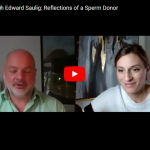 By Wesley J. Smith, J.D., Special Consultant to the CBC
By Wesley J. Smith, J.D., Special Consultant to the CBC
The embryonic stem cell research controversy is an ethics, not a science, debate. But it also involves the rule of law. Indeed, two recent court rulings—one in the United States and one in Europe—illustrate how the intense politics swirling around ESCR have the potential to undermine the rule of law.
First, let’s consider an ongoing case in the USA, in which two adult stem cell researchers sued to enjoin federal funding of human ESCR because, they claim, doing so violates the Dickey-Wicker Amendment. Dickey-Wicker, a government rider to the budgetary process, has been passed by every Congress and signed by every president since 1996. Its terms explicitly preclude the Feds from paying to create embryos for use in experiments, or for research that destroys embryos. Thus, the outcome of the researchers’ lawsuit should be decided based on the facts of how embryonic stem cell research (ESCR) is performed as applied to the clear terms of the law as written. If embryos are destroyed, then under Dickey, federal funding would seem to be precluded. If not, then not.
 But when an issue is as hyper politicized as stem cell research, nothing is that simple. Those supporting federal funding (beginning with President Bill Clinton) have tried to circumvent Dickey by arguing that ESCR should be divided into two pieces: the destruction of the embryos, and then, the research on the cells derived from such destruction. So long as the destruction is paid for privately, they argue, the Feds may fund the research legally—even if the embryo is destroyed in anticipation of receiving federal funding thereafter.
But when an issue is as hyper politicized as stem cell research, nothing is that simple. Those supporting federal funding (beginning with President Bill Clinton) have tried to circumvent Dickey by arguing that ESCR should be divided into two pieces: the destruction of the embryos, and then, the research on the cells derived from such destruction. So long as the destruction is paid for privately, they argue, the Feds may fund the research legally—even if the embryo is destroyed in anticipation of receiving federal funding thereafter.
Federal District Court Judge Royce Lamberth rejected that sophistry. First, he ruled that in order to conduct ESCR, an embryo must be destroyed to obtain the stem cells. Then, he got to the question of whether the embryo destruction and the subsequent research could be reasonably viewed as two separate transactions. Nope. From his decision granting an injunction against funding (pages 10-11):
The language of the statute does not support defendants’ alternative definition of research as “a piece of research.” (Def.’s Opp’n [22] at 31 (citing RANDOM HOUSE DICT. (2009).) Indeed, the Dickey-Wicker Amendment does not contain any language to support such a limited definition of research. Rather, the language of the statute reflects the unambiguous intent of Congress to enact a broad prohibition of funding research in which a human embryo is destroyed. This prohibition encompasses all “research in which” an embryo is destroyed, not just the “piece of research” in which the embryo is destroyed.
That’s clear, simple, concise—and very politically incorrect. A court of appeals subsequently reversed the ruling on a 2-1 vote, stating that it was “reasonable” for the NIH to distinguish between funding the actual destruction and funding research on cells thereby derived. But that’s more a policy preference than a clear ruling based on how the law is actually written. Thus, while Lamberth has the better side of the factual and legal arguments, as history has shown, given the intensity of the politics swirling around ESCR, fact, law, and $2 will buy you a small cup of Starbucks’ coffee.
 Interestingly, Europe is wrestling with the exact same question of whether to view ESCR in parts or in toto, this time in determining whether ESCR products can be patented under the law of the European Union. A few months ago, a European Court magistrate ruled that ESCR products are not patentable because they are manufactured as an industrial use of the human embryo, which is not permitted under European patent law. From the original decision:
Interestingly, Europe is wrestling with the exact same question of whether to view ESCR in parts or in toto, this time in determining whether ESCR products can be patented under the law of the European Union. A few months ago, a European Court magistrate ruled that ESCR products are not patentable because they are manufactured as an industrial use of the human embryo, which is not permitted under European patent law. From the original decision:
An invention must be excluded from patentability where the application of the technical process for which the patent is filed necessitates the prior destruction of human embryos or their use as base material, even if the description of that process does not contain any reference to the use of human embryos.
Thus, like Judge Lamberth, the magistrate based his decision on accurate science of how ESCR is accomplished and how the law, as written, applies to that process.
As has happened in the USA, following the law generated a furious political pushback, with the usual accusations made by proponents of ESCR that the magistrate was merely imposing his moral or religious views, amidst dark warnings that the ruling could shut down the sector, and public complaints by people with degenerative diseases that the magistrate had destroyed their “only hope” for cures. As of this writing, we don’t know whether the EU court will follow the finding of the magistrate—the usual course in such cases—or be swayed by the white hot political pressure being mounted by ESCR proponents.
The Congress and the EU Parliament are free to change the law if they want ESCR governmentally supported by funding and patent protection. Until they do, however, judicial rulings should rest on the fact that ESCR requires the destruction of embryos applied to a clear reading of the relevant statutes as written. Doing otherwise might please the politically powerful. But, that’s how the rule of law is destroyed.
CBC special consultant Wesley J. Smith is a senior fellow at the Discovery Institutes Center on Human Exceptionalism. He is also the author of Consumer’s Guide to a Brave New World.
Author Profile
Latest entries
 Sperm DonationMarch 15, 2022Venus Rising with Edward Saulig: Reflections of a Sperm Donor
Sperm DonationMarch 15, 2022Venus Rising with Edward Saulig: Reflections of a Sperm Donor BioethicsMarch 13, 2022Dr. C. Ben Mitchell: 2022 Ramsey Award Winner
BioethicsMarch 13, 2022Dr. C. Ben Mitchell: 2022 Ramsey Award Winner #BigFertilityMarch 10, 2022Documentary Explores One Woman’s Journey through Egg Donation
#BigFertilityMarch 10, 2022Documentary Explores One Woman’s Journey through Egg Donation BioethicsMarch 9, 2022Questioning the “Science” of the Gender Industry
BioethicsMarch 9, 2022Questioning the “Science” of the Gender Industry

